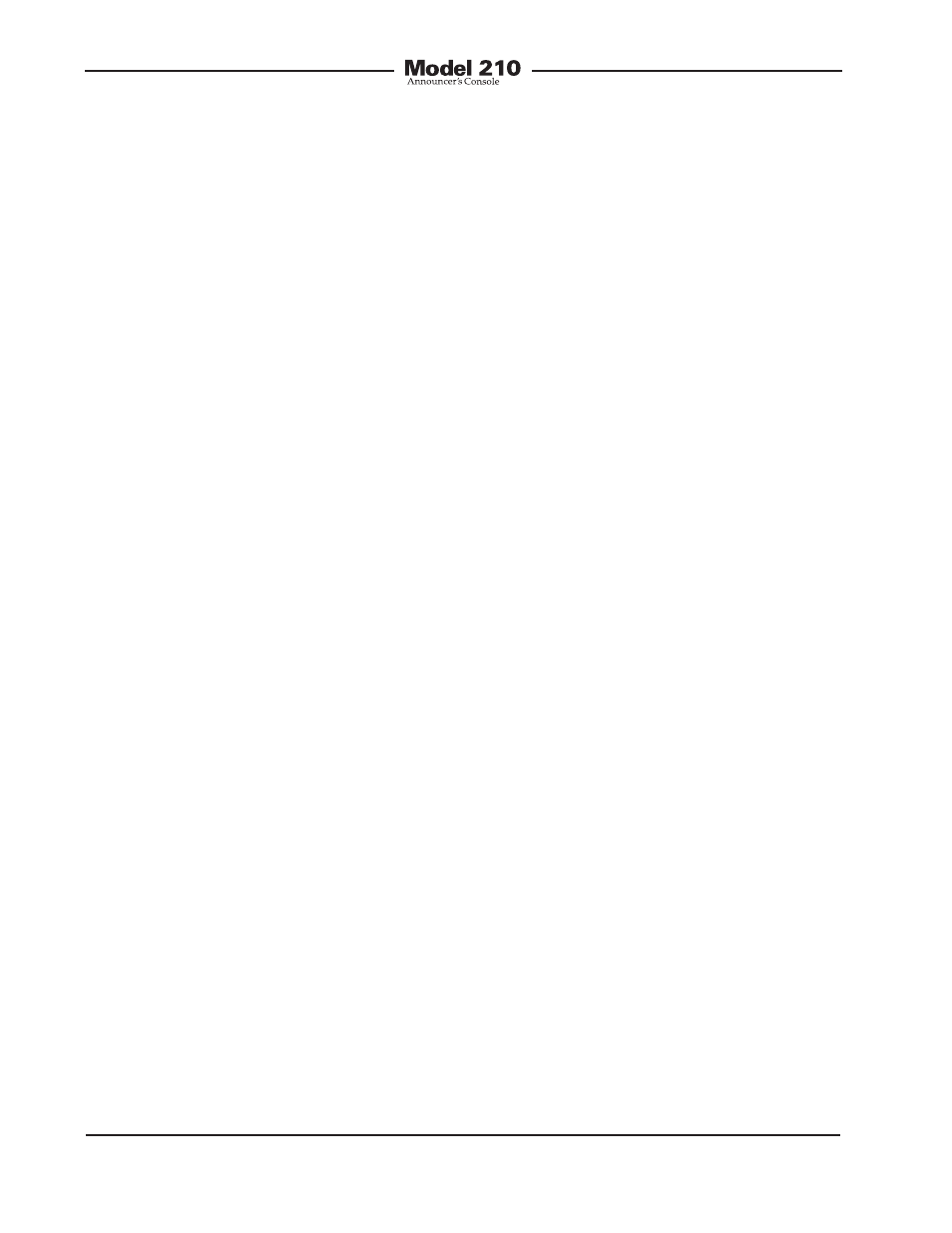Headphone output – Studio Technologies 210 2008 User Manual
Page 10

Issue 4, October 2008
Model 210 User Guide
Page 10
Studio Technologies, Inc.
Microphone interconnection is made by
way of a 3-pin female XLR-type connec-
tor which is located on the Model 210’s
back panel. The mating connector (male)
should be wired so that pin 2 is signal
high (+ or hot), pin 3 is signal low (– or
cold), and pin 1 is shield. It’s possible that
an unbalanced microphone will also work
correctly. In this case, the mating connec-
tor (male) should be wired so that pin 2
is signal high (+ or hot), and signal com-
mon/shield is connected to both pins 1
and 3.
The Model 210 is not compatible with
unbalanced “electret”-type microphones
that require a source of low-voltage DC
for operation. These microphones, some-
times found in low-cost headsets, are
not generally suitable for on-air or other
demanding applications.
As of the writing date of this user guide,
the Sennheiser HMD25 headset is very
popular for on-air sports broadcasting
use. A fine product, it works very well
with the Model 210. Note that adding the
suffix “-XQ” to the headset’s part number
(HMD25-XQ) specifies a 3-pin male XLR-
type connector for the dynamic micro-
phone and a ¼-inch 3-conductor plug for
the stereo headphones. This configura-
tion is very useful, allowing the headset
to work directly “out of the box” with the
Model 210.
If the writer may digress for a moment
to recount a story… an audio dealer
once shared a secret with me concerning
headsets. He loved selling the “lower-end”
(less expensive) models of name-brand
headsets, which he did by the veritable
“boatload.” Why? Because these usually
broke soon after going into service! He
knew that on a regular basis he’d receive
orders for more of them. Had these
users, from the beginning, purchased only
premium-quality headsets, their total cost
of ownership would have been much less.
Enough said…
Headphone Output
The Model 210’s headphone output is
compatible with stereo or mono head-
phones, headsets, or earpieces. Connect-
ing devices with a nominal impedance
of 100 ohms or greater is preferred. This
shouldn’t prove to be an issue as essen-
tially all contemporary devices already
meet this condition.
Devices are connected to the headphone
output by way of a ¼-inch 3-conductor
phone jack located on the Model 210’s
back panel. As is standard for stereo
headphones, the left channel is connected
to the “tip” lead of the ¼-inch headphone
jack. The right channel is connected to
the “ring” lead of the jack. Common
for both channels is connected to the
“sleeve” lead.
Devices with ¼-inch 2-conductor “mono”
plugs can also be used with the Model
210’s headphone output. In this arrange-
ment only the tip lead (left channel) will
be active. The 2-conductor plug will
physically connect (“short”) the ring lead
(right channel) to the sleeve lead (com-
mon). Technically this won’t damage
the circuitry associated with the right-
channel headphone output. (51 ohm
protection resistors are electrically in
series with the headphone output circuits.)
However energy will be wasted if an au-
dio signal coming out of the right channel
goes into a “dead short.” There is a simple
solution to this issue. No audio source
should be assigned to the right-channel
headphone output. Refer to the Configura-
tion section of this user guide for details.